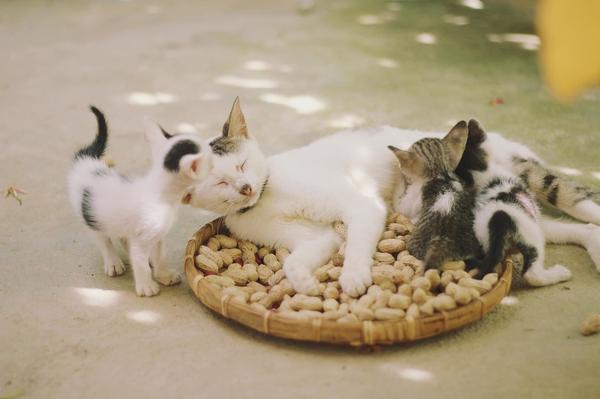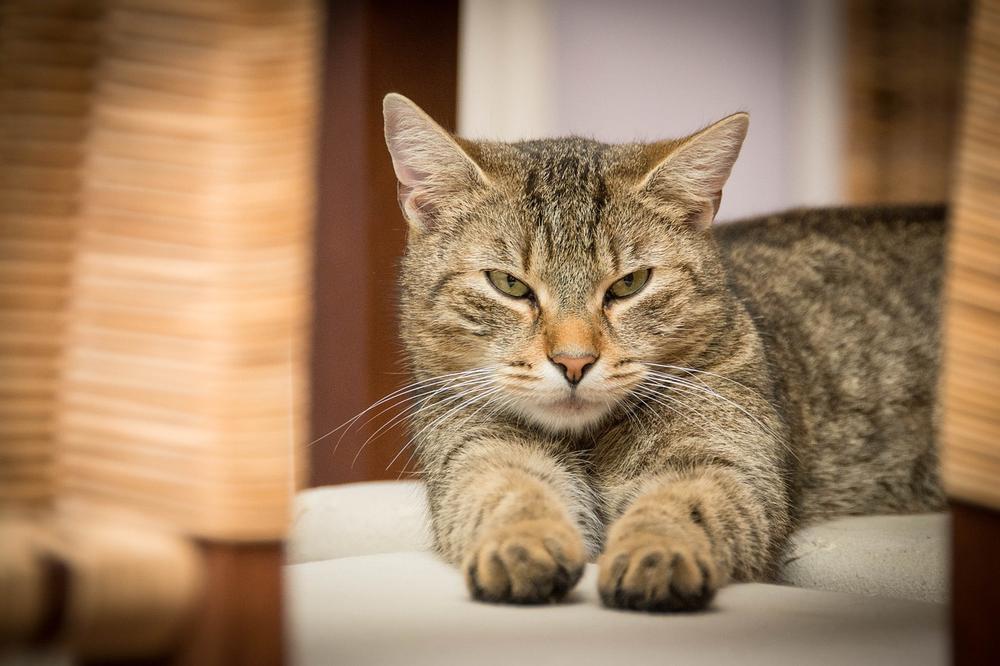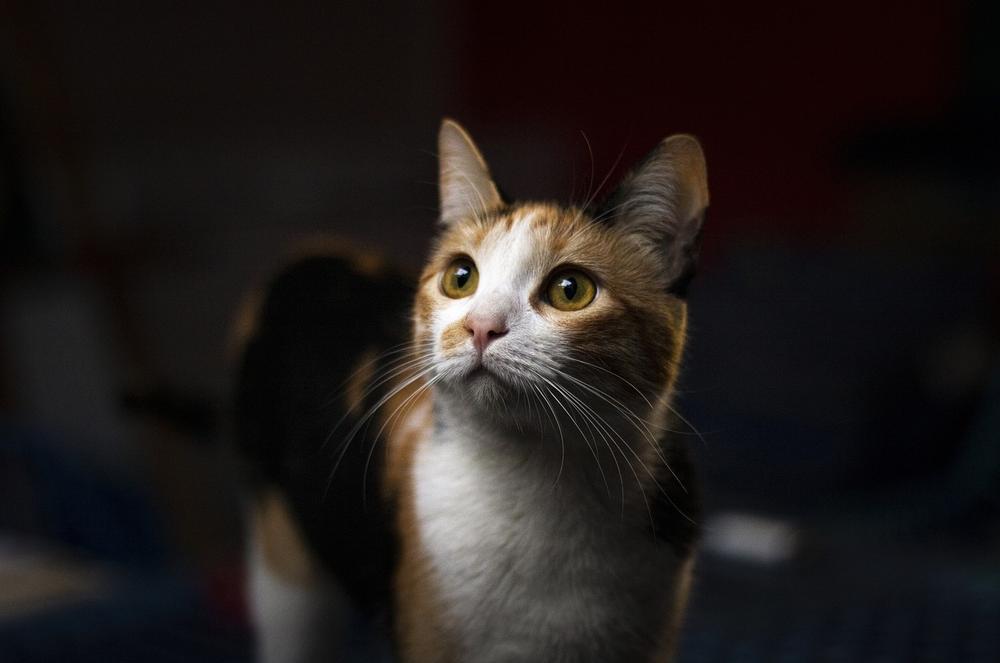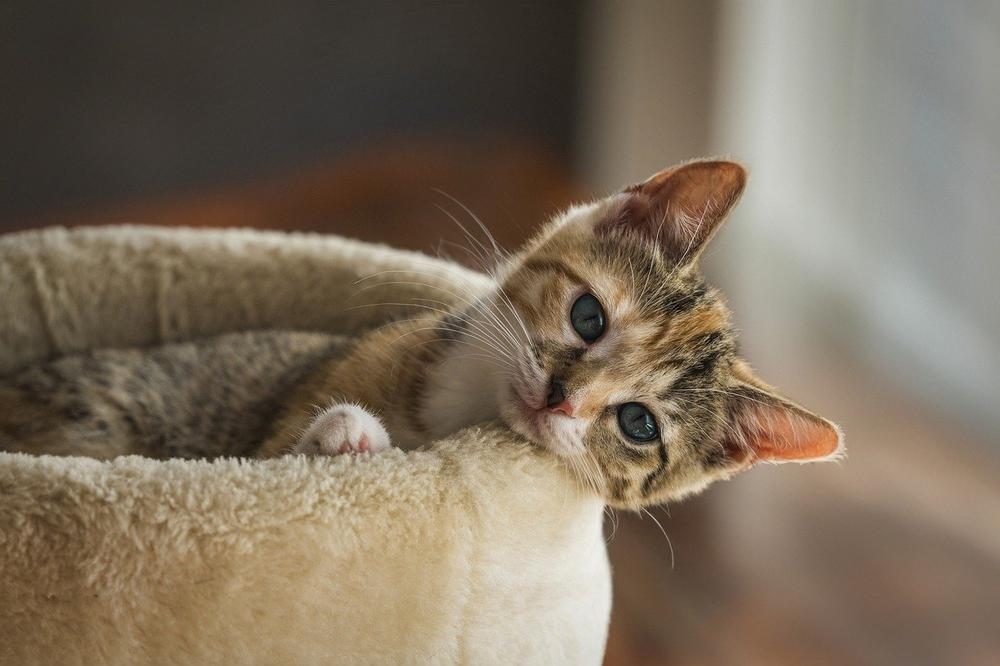Why Do Cats Groom Each Other? Grooming Signals Explained

Ever wondered why cats groom each other?
Bet you've caught yourself watching in awe as Fluffy and Whiskers give each other a spa treatment.
Intrigued about cat social behavior and bonding?
So was I. 😺
I mean, seriously, what compels them to lick each other's fur with such gusto?
No judgment here, folks.
I've been there, lost in the fluffy wonder of it all.
But fear not, dear friend, because today we'll unravel the fascinating reasons behind our feline friends' grooming rituals.
So, buckle up, curious cat lovers, and let's dive into the captivating world of cat grooming.
Allogrooming for Unreachable Areas
Cats groom each other to reach those tricky spots. It's called allogrooming, and it's when cats scratch each other's backs.
But too much grooming can be a sign of anxiety in cats.

And if they lick each other excessively, fights could break out.
So here's what you can do to help your cats groom each other without any problems:
- Give them personal space so they don't feel threatened or overwhelmed. This calms them down.
- Keep them entertained with toys and scratching posts. This redirects their excess grooming behavior.
- Watch out for signs of aggression or discomfort during grooming and step in if needed.
- Create a calm and stress-free environment. Cats are sensitive creatures, and a peaceful atmosphere helps them relax.
- If you notice constant issues or fighting, consult a veterinarian or animal behaviorist for expert advice.
Ensuring a pleasant and relaxed grooming experience for your cats can be achieved by adhering to these suggestions. 😺
Main points I'll expand upon further down this article:
- Grooming helps cats remove debris, excess hair, and parasites.
- Over-grooming may indicate underlying health conditions.
- Hairballs can be prevented with certain foods and supplements.
- Disease-carrying viruses can be transmitted during grooming.
- Positive grooming experience results in relaxation.
- Ensure cats are healthy and parasite-free before allowing grooming.
- Grooming between cats shows affection and strengthens bond.
- Allogrooming serves as a form of protection and trust.
- Grooming behavior is learned from mothers and can continue into adulthood.
- Grooming can be a way to communicate dominance or social hierarchy.
And it gets more fascinating...
Regular grooming is not only important for maintaining a healthy coat, but it also serves as a way for cats to bond and establish social relationships with each other.
Let's explore the intriguing reasons behind cats' grooming habits...
Grooming Helps Maintain Health
Regular grooming is essential for cats' overall health. It promotes a healthy coat by removing dead hair, preventing tangles and dirt buildup. Excessive grooming may indicate underlying health issues, so you should monitor changes in behavior and consult a vet if needed.
Grooming for cats is more than just a beauty routine, my friend.
It plays a crucial role in maintaining their overall health and well-being.
Regular grooming helps keep your cat's coat healthy.
Through grooming, cats can remove dead hair, prevent tangling and matting, and get rid of dirt and excessive fur that can make them appear unkempt.
Believe me, you don't want your fluffy buddy looking like a complete disaster!
You may think that cats groom each other as a way to bond or show love, but there's more beneath the surface. Excessive grooming could actually indicate underlying health problems.
Therefore, you should pay attention, as it could be a sign of issues like hyperthyroidism, arthritis pain, allergies, irritating mites, or fleas.
If you notice any strange changes in grooming behavior or significant hair loss, it's best to take your cat to the vet for an evaluation.
It's always better to be safe than sorry, wouldn't you agree?
Now, let me drop some knowledge bombs on you, my curious reader.
Did you know that while grooming, cats can transmit diseases to each other?
That's right!
Viruses such as Feline Leukemia Virus and Feline Immunodeficiency Virus can spread through saliva during grooming sessions.
That's why you should keep your cat up-to-date on vaccinations and regular testing, especially if they spend time outdoors or tend to have an aggressive demeanor.
Folks, having a positive grooming experience is crucial.
Your cat should display signs of relaxation, such as purring and having a calm posture.
If they try to escape like Houdini, they might not be too thrilled about the whole grooming situation.
Let's respect their boundaries, shall we?
And before you allow cats to groom each other, make sure both kitties are healthy and free from parasites.
If one of them develops skin or coat issues, it's probably best to postpone communal grooming until the problem is resolved.
Safety should always come first, my friends!
Well, that's all for now, folks.
Stay tuned for more fascinating insights into the unique world of our feline companions.
Meow out!
Now, here's something fascinating that you may not know yet about cats grooming each other:
Grooming as Affection
Cats are fascinating creatures when it comes to showing affection.
They're not just into cuddling and meowing – they also groom each other.

And they don't do it out of boredom or itchiness, but as a way to express love and trust (awww).
So, here's why cats groom each other:
- Bonding: When one cat grooms another, it strengthens their bond. It's like saying, "Hey, I really like you, so let me lick you all over."
- Mutual grooming is for grown-ups: Adult cats groom each other to show closeness. It's their way of saying, "We're pals."
- Moms and kittens: Allogrooming (fancy word alert!) is quite common between mommy cats and their babies. It helps keep the little ones clean and cozy.
- It's a protective act: Grooming isn't just about looking fabulous; it's actually a defense mechanism against predators. Cats use their tongues to remove dirt and parasites. Talk about multitasking!
- Grooming while asleep: Some cats take their grooming duties seriously. They'll groom others even while snoozing, which shows a high level of trust and safety in their bond.
So, next time you see your cats giving each other a tongue bath, remember that it's more than just a hygiene routine – it's an adorable display of kitty love.
And now, let's delve into the fascinating world of kittens and their mothers, where grooming serves multiple purposes!
Grooming as a Kitten
When kittens are groomed by their mothers, it's not just about staying clean. It actually helps with their circulation and digestion too.
The momma cat plays a crucial role in teaching her babies how to stay hygienic from a young age.
And guess what?
The siblings also pick up grooming habits by watching their mom.
This caring behavior can stick around even when they become adults.
Licking is an instinct deeply ingrained in cats' DNA.
Maternal instincts lead to cats grooming each other right from when they're tiny kittens.

Oh, and there's another thing cats do - kneading.
It's tied to memories of being a kitten and has a calming effect on them. 🐾
So, if you've ever wondered why your grown-up kitty still grooms themselves or kneads on soft surfaces, it all goes back to their early experiences as babies.
It's pretty interesting to see how these grooming behaviors carry on throughout a cat's life, showing how their upbringing sticks with them.
And did you know that grooming behavior among cats is not limited to just themselves?
Cats can also be seen grooming each other!
But why do they do this?
Let me explain the fascinating reasons behind cats grooming each other...
Fostering Bonds and Integration
Cats engage in allogrooming to show they accept, trust, and include each other.
But introducing a new cat and building friendships is no walk in the park.
No worries though, I got some tips for you:
- Neutralize smells: Use odorless cleansers on both cats to prevent territorial disputes.
- Pheromones rock: Pheromone diffusers can create a calming atmosphere for your furry friends.
- Isolation with a view: Keep the new cat in a separate room but let them see each other through a gate or crack.
- Introduce scents via towels: Swap their beds or rub one cat's smell onto a towel and place it near the other's sleeping spot.
- Patience pays off: Let the cats take their sweet time and don't force interactions.
Allogrooming plays a major role in bonding and making peace between cats.
So, be patient and give them all the time they need during the integration process!
In conclusion, fostering bonds and integration between cats might seem challenging, but with the right techniques and patience, you can create harmony in your feline family.
However, if you're experiencing specific issues like your cat hissing at your husband, there's a solution.
I've written an informative blog post called My Cat Hisses at My Husband where I delve into possible reasons and solutions for this behavior.
Check it out to gain valuable insights.
Dominance and Grooming
| Reason for Cat Grooming | Additional Information |
|---|---|
| Establishing Hierarchy | Cats groom each other to reinforce social rankings and establish dominance within a group. |
| Bonding and Trust-building | Grooming helps cats form strong bonds and build trust with one another. It acts as a social cement within a group setting. |
| Maintaining Cleanliness | Grooming assists in keeping cats' fur clean, removing dirt, debris, and odors. It helps to maintain good hygiene. |
| Distributing Scents | Through grooming, cats transfer their unique scents onto each other, marking them as part of the same social group. |
| Social Interaction | Grooming sessions provide cats with an opportunity to engage in positive social interaction and communication. It helps prevent feelings of isolation. |
| Mutual Benefit | Cats may groom each other for mutual benefits, such as reciprocal grooming to reach difficult-to-reach areas or alleviating itchiness. |
| Strengthening Relationships | Regular grooming between cats strengthens their relationships and promotes a harmonious group dynamic. |
| Reducing Stress | Grooming can act as a stress-relieving activity for cats, helping them relax and feel more secure within their social group. |
| Displaying Affection | Cats often groom each other as a display of affection and to show care towards one another. |
| Regulating Body Temperature | Grooming helps cats regulate their body temperature by spreading saliva over their fur, which can cool them down in hot weather or provide insulation in cold weather. |
| Alleviating Boredom | Cats may groom each other to alleviate boredom and provide mental stimulation, especially in situations where other forms of play are limited. |
Well, let me tell you, cats are quite the interesting creatures when it comes to grooming.
One of the main reasons why cats groom each other is dominance.
Yup, that's right!
Within a cat group, the dominant cats may use grooming as a way to show their authority and exert control over their subordinate counterparts.
It's like they're saying, Hey, I'm the boss here!
This behavior, known as allogrooming, is actually a non-harmful method for displaying dominance.
Now, here's an interesting tidbit for you...during the breeding season, intact female cats tend to engage in more grooming.
I guess you could say it's their way of showing off their feminine wiles.
Size also matters when it comes to asserting dominance through grooming.
Larger cats often take charge over their smaller feline friends.
But here's the thing, excessive grooming, which is also called barbering, can lead to skin infections if it becomes too aggressive or dominant.
Nobody wants their cats battling it out with their claws during a grooming session, right?
So, if you notice some tiffs between your fur babies, it might be a good idea to separate them or provide separate rooms for their grooming sessions.
Here's another intriguing fact:
Grooming is not just limited to domestic cats. Even big cats like lions in prides use grooming as a demonstration of dominance.
It's like their version of saying, I'm king of the jungle, deal with it!
Allogrooming among cats can also showcase social hierarchy and dominance.
It's typically reserved for friends and family, sort of like a special bonding ritual.
However, there are cats who would rather choose to scrap it out instead of groom each other.
That just goes to show that cats don't always follow a strict social hierarchy.
Life with cats, huh?
You never know what you're gonna get! 😸
Well, I've just given you a sneak peek into the fascinating world of cats' grooming habits and dominance!
But did you know that cats have another remarkable grooming behavior?
Get ready, because in the next section, we'll explore autogrooming – a behavior that showcases their independent nature and ensures their personal hygiene.
Let's dive deeper and uncover this intriguing aspect of feline self-care.
Trust me, it's something you won't want to miss!
Autogrooming vs. Allogrooming
Autogrooming, also known as self-grooming, is something cats just have to do.
It's like a spa day for them.
They do it because they want to keep clean and healthy.
But get this - cats can also groom each other!
Cats helping cats, keeping everyone looking their best.
Pretty amazing stuff, right?
Let's go through some interesting facts about autogrooming and allogrooming that will make you say, "Wow, I never knew that!"
- Autogrooming helps cats stay dapper by getting rid of dirt, debris, and loose hair. No more messy fur and they'll always look on point.
- Cats have these rough tongues which act as natural grooming tools. These tongues help spread the oils in their fur, giving them a shiny and soft coat.
- When cats groom each other, it's called allogrooming. It's like a social bonding activity among cats. Talk about #friendshipgoals!
- Grooming actually makes cats feel good. It releases endorphins in their bodies, making them relaxed and less stressed. Who needs a fancy spa day when you have autogrooming?
- Some cats need a little extra help with grooming due to certain health issues or physical limitations. Regular brushing or gentle bathing can keep them looking their very best.
So there you have it!
Autogrooming and allogrooming - two fascinating behaviors that benefit cats' in essence well-being and create a sense of community among our feline friends.
Next time you see your cat engrossed in a grooming session, remember how important and beneficial these behaviors are for them.
Keep those cats fabulous!
And that wraps up today's article.
If you wish to read more of my useful articles, I recommend you check out some of these: Why Do Cats Like Their Ears Rubbed, Why Does My Cat Bite My Ear, Why Do Cats Wrap Their Tail Around Me, Do Siblings Cats Mate, and Do Cats Like It When You Touch Their Whiskers
Talk soon,
-Sarah Davis